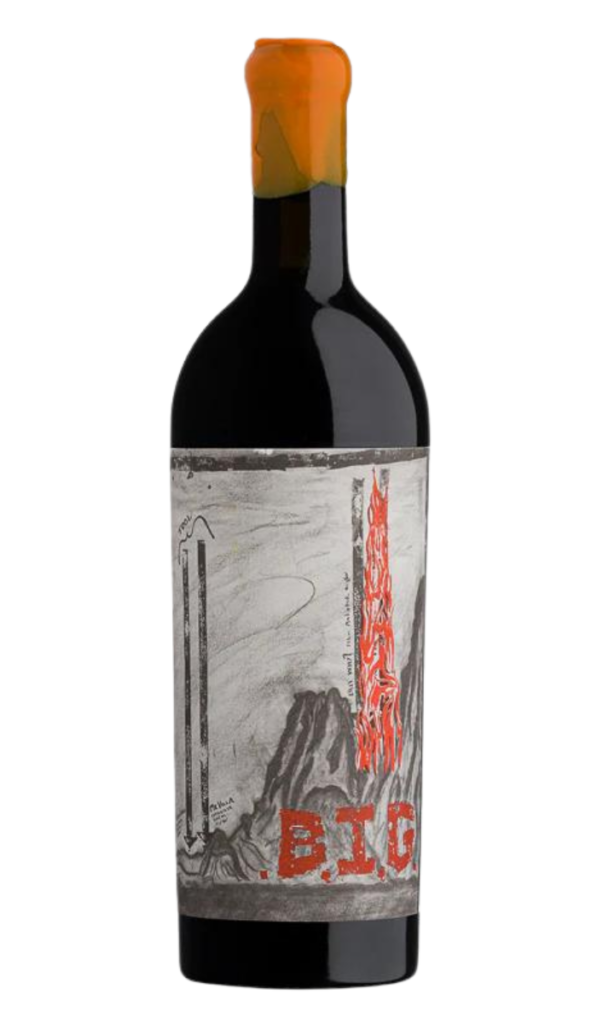
Out of stock
174,63 €
Out of stock
95% Cabernet Sauvignon and 5% Cabernet franc. The name B.I.G. does not refer to the style of the wine but to the magnitude of the blend. This wine represents Bordeaux from South Africa. The first vintage of this wine was in 2015 and it had six vineyards in the final blend, all Cabernet Sauvignons from different heights above sea level. The blend varies from year to year. Each year I adjust the label accordingly. The label shows a landscape and identifies all the vineyards that went into the final wine. The closest vineyard to the ocean is 3km and the furthest 3 hours drive.
The Swartland Revolution was exactly that: a revolution initiated by Swartland farmers which turned the premium wine market upside down. Suddenly premium higher-priced Bordeaux-style Stellenbosch wines had to share the stage with premium Rhone-style Swartland blends. And so it happened then, that for the past 8 years, the media stuck Cabernet Sauvignon in a dark and dusty corner – not “cool” enough. As some of you might know, at the moment I make wine from 30 varieties. I thought it a bright idea to do something for the neglected, fallen-from-grace Cabernet Sauvignon. I subsequently identified vineyards with vastly different heights above sea level: 7 near Somerset West (at 32 to 391 m), 2 on the outskirts of Tulbagh (both at 310 m) and 2 in the Witzenberg’s Koue Bokkeveld (at 734 and 755m). When I first started speaking to the masters of Cabernet here at the Southernmost tip of Africa, the first thing mentioned by most was the dreaded Greenness in Cabernet Sauvignon – a very unwelcome herbaceous / vegetative character. This develops due to high levels of Pyrazines present in the wine – something that’s determined by the ripeness level of the grapes. The longer the grape bunches get exposed to sunlight during the growing period, the less Pyrazines – resulting in less greenness in the end product – reducing herbaceousness and amplifying fruit. Here in South Africa we have a unique situation: although we have plenty of sunshine, it is hot and dry. In most instances, by the time the grapes are ripe for picking, it hasn’t had long enough sun exposure for the Pyrazines to get to an acceptable level. And if you leave it on the vine for longer, the sugar level gets too high. These sugars are then transformed during fermentation into alcohol resulting in rather high alcoholic wines. So in general, Cabernet creators are in fact chased by the Green Monster. Defended by some, feared by most. What confuses me, though, is that one could argue that this greenness is a stylistic characteristic of wines closer to the ocean, which makes it acceptable. Or does it? Where the exact point lies where herbaceousness turns into greenness – I am not sure. That’s why I decided to make a Cabernet Sauvignon led blend and identified 9 vineyards from different heights above sea levels. The closest vineyard to the ocean is 3km and the furthest 3 hours drive. We made them all separately and aged them all in French oak for one and a half years – picked mainly when we thought the grapes tasted best. Interestingly enough, the first vineyard on the Helderberg ripened in late February whereas the last vineyard in Ceres Plateau (about 3 hours drive from the first) reached optimum ripeness on 22 April – 100 days into harvest and also the very last grapes to hit the cellar.
Cultivar: Cabernet Sauvignon (95%), Cabernet Franc (5%)Vintage: 2020Region: Western Cape
Amount of Bottles Produced: 4953
Vineyard: Vines from various vineyards in Stellenbosch and Tulbagh.
Winemaking: The grapes were picked at optimal ripeness and cooled overnight to 4 degrees celsius. The next morning the grapes were destemmed to open top fermenters. The juice underwent spontaneous fermentation and stayed on the skins for as long as possible. Pressed into older French oak small barrels, 18 months in barrel, blended and bottled.
Alcoholic Strenght: 15% / vol
Acidity: 5.57 g/l
PH: 3.7
Reducing Sugar: 2.2 g/l
Free SO2: 28 ppm
Total SO2: 83 ppm
Volatile Acidity: 0.86 g/l
Closure: Natural Cork
Vegan: Yes